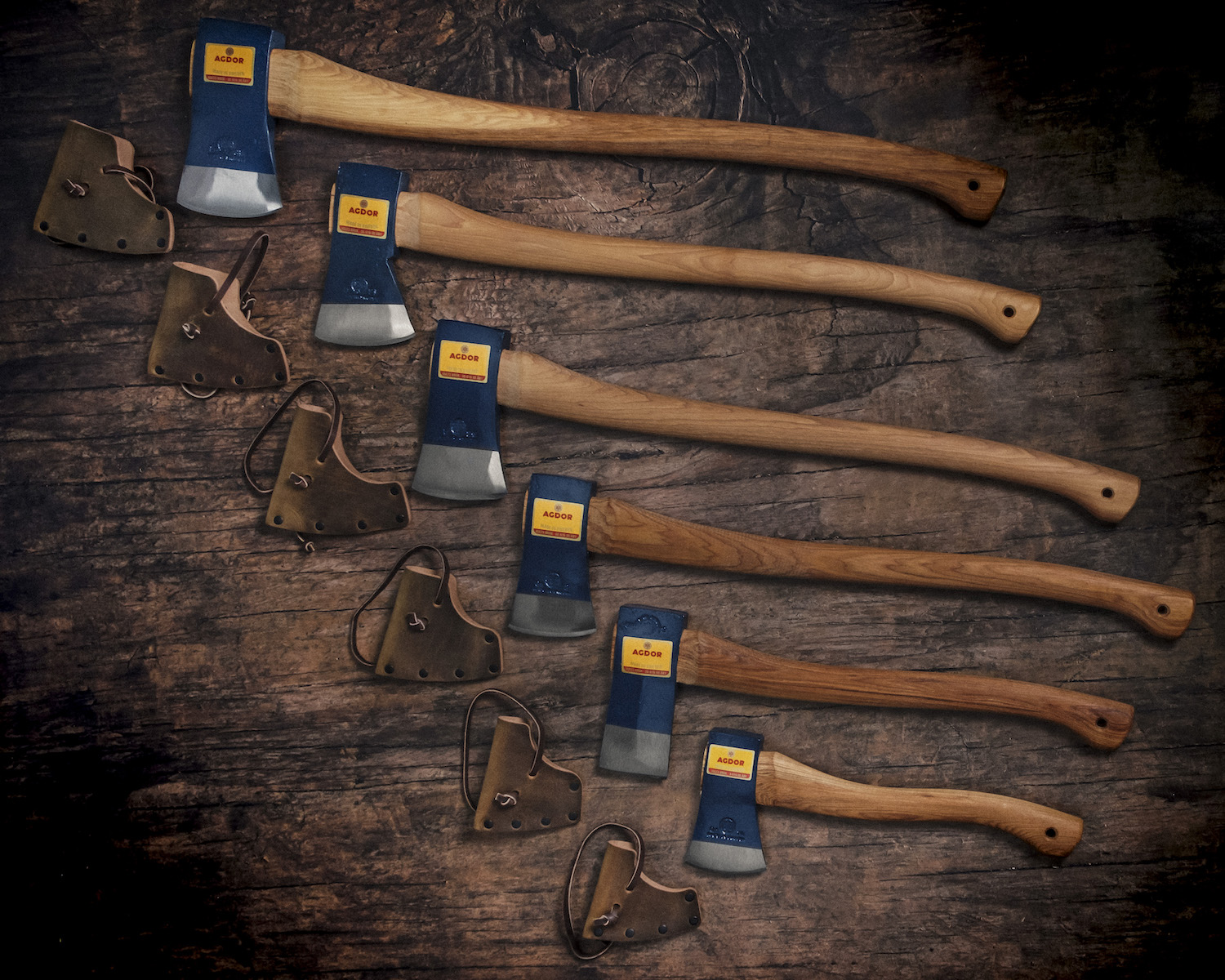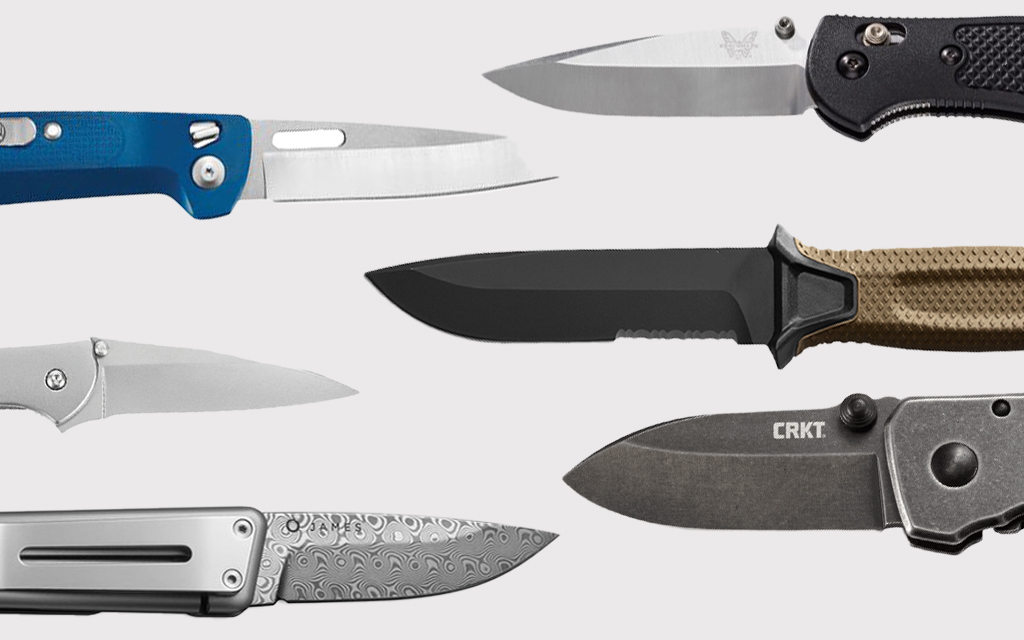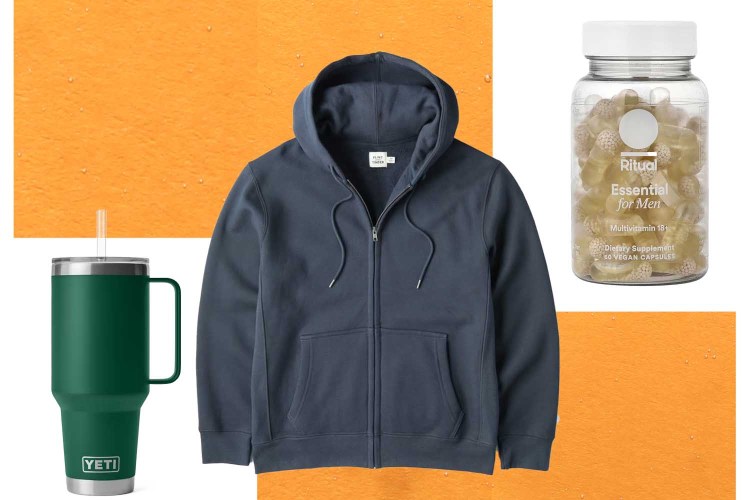Nota bene: All products in this article are independently selected and vetted by InsideHook editors. If you buy something, we may earn an affiliate commission.
A few months ago I got a crash course in axes courtesy of Peter Buchanan-Smith, the founder of Best Made Co. He had just written the Axe Handbook, an exhaustive but digestible guide to the tool, which featured everything from terminology to a catalog of colorful vintage labels to tips on what to look for when buying an axe, whether new or old.
It inspired me to set off on my own quest to find the perfect axe. Would it be a classic felling axe? Or maybe a more intriguing Hudson Bay shape or a Pulaski with the adze on the back end? Unfortunately, unlike Buchanan-Smith, I don’t have the luxury of traveling around to the best axe forgers in the country and hand-picking the tool that feels right in my grip. Instead, I found myself at various hardware stores and tool warehouses staring down rows of synthetic handles, something he advises against buying.
“Fiberglass and plastic composite helves are unnecessarily difficult and messy, if not impossible to replace, and don’t provide the same kind of comfort when you strike as hickory,” he writes in the chapter “Buying New.” As an alternative, there are all sorts of axes I could buy sight unseen online, but who knows whether the wood will be good quality or the steel will be sharp and strong when it shows up on my doorstep?
A couple months of disappointment ended when the perfect solution fell into my lap: this summer, Hults Bruk, the Swedish axe maker that’s been in the forging business since 1697, brought its historic Agdor line back to the U.S.
Reviving the Hults Bruk Agdor
The Agdor name can be traced back to the 1880s and the lineup today includes six sizes, from the Agdor 15 Hatchet up to the Agdor 32 Yankee Felling Axe (the numbers designate the length of the helve, or handle). All of them are forged from high-quality Swedish steel and mounted using American hickory helves, and when they arrive in the U.S. they’re finished with robust leather sheaths made in North Carolina by Axe and Awl Leatherworks. They feel like tools out of the past but perform just as good if not better than anything on your local Home Depot’s shelves.
I should know, I’ve had the chance to test two models: the Agdor 28 Yankee Felling Axe and the Agdor 28 Montreal Felling Axe, the former the platonic ideal of a wood chopper and the latter so-named for its wider cutting blade. Hults Bruk shipped them to me, and that’s likely your best course of action to find one of these at the moment as these are new to the market. Huckberry carries the 20-inch Splitting Axe, REI carries the Montreal style (which Hults Bruk intriguingly notes is perfect for “camping, expeditions and axe throwing”), but your best bet is, oddly enough, Amazon, which is the only online retailer currently carrying all six models. (That may change in the near future.)

Ordering an axe on Amazon, or any other online retailer, may seem like you’re cheating yourself out of some of the Swedish heritage they’re offering. I, for one, would jump at the chance to visit their factory outside of Norrköping where they’ve been since the late 1600s. However, when I received my axes in the mail, all of Buchanan-Smith’s tips for buying the perfect axe had apparently already been figured out on Hults Bruk’s end.
For example, he recommends buying an axe with an American hickory helve “lightly finished with linseed oil.” That’s the case here. He also says the wood grain must be “parallel or close to parallel with the head.” My Montreal is as close to parallel as natural wood grain can be, and my Yankee Felling Axe is not too far off. Then there is, of course, the issue of sharpness — I promise you will not be disappointed in that regard.
The History Behind the Axes
After 150 years in the modern axe-making business — Hults Bruk is happy to acknowledge that Gunnar Ekelund, the owner in the late 1800s, traveled to the U.S. in 1887 to acquire some American expertise to add to their Swedish practices — the company has earned its trusted reputation. If you’re an avid outdoorsmen or even a bushcraft devotee, you may be able to appreciate the traits I’ve described. But even if you’re in it for the story behind the axe as much as the log-splitting capabilities, you’ll want to consider one of these blue beauts.
The entire Agdor line features painted blue axe heads and red and gold labels on the cheek. As the company told me, the Agdor line started around 1880 and has been painted since at least the 1930s, with colors including “Japan black,” red, gold, green and blue. It was around 1961 when the blue paint and gold sticker aesthetic stuck, as you can see from a vintage catalog in Swedish on their website, one of many they’ve uploaded for your viewing pleasure.
According to the company, the name is likely a play on Rodga (Agdor backwards), the name of the mansion that used to be part of Hults Bruk’s 16,000-acre estate. And while they have been sold in the U.S. in the past, this is a major return to the States for the Agdor line; they’re replacing the brand’s Standard line of axes. Thankfully, they’re here just in time for winter when Americans light their fireplaces back up and need something to cut through their cord of firewood.

As Buchanan-Smith says, in a perfect world you could go to your favorite axe maker’s forge, watch your tool being made, then pay them in cash and head on your merry way. Today, that’s not possible for Hults Bruk or just about any other company. But here, when that package shows up on your door looking like, well, every other package that shows up on your doorstep these days, you know that inside is 300 years of history in axe form — and a tool that could likely slice right through the cardboard if it didn’t have that leather sheath snugged on tight.
We've put in the work researching, reviewing and rounding up all the shirts, jackets, shoes and accessories you'll need this season, whether it's for yourself or for gifting purposes. Sign up here for weekly style inspo direct to your inbox.
























